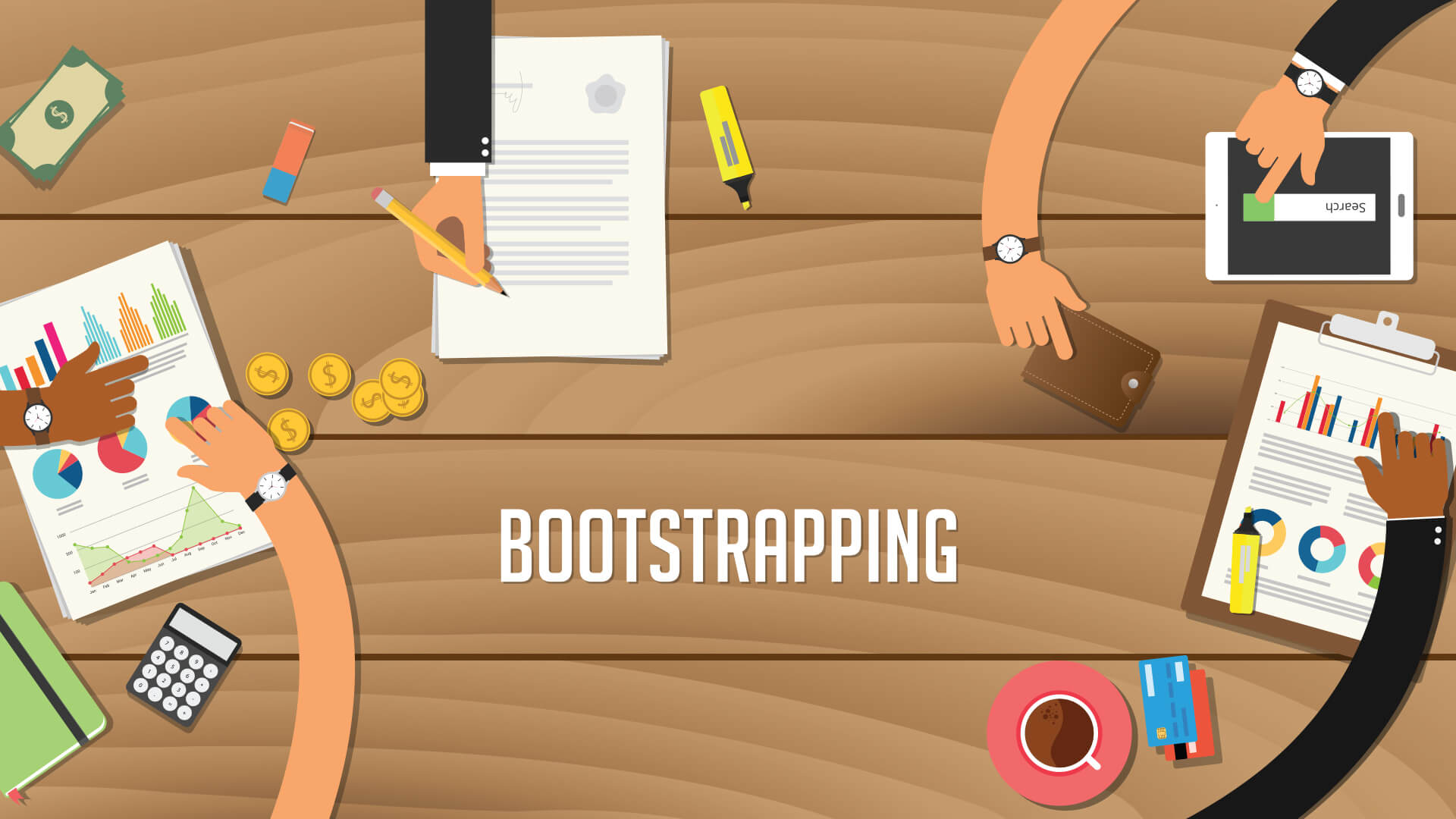So, you have big ideas and are ready to launch your business.
Starting your own company can be exciting and fulfilling. You’re your own boss and can make all the decisions without consulting anyone (if you’re a solopreneur). One of those decisions is funding.
While there are several funding options, most entrepreneurs bootstrap. Why? Well, there are many reasons. But the most significant is that they retain complete control of their business. This is especially crucial for founders with a unique vision.
However, as romantic as that may sound, bootstrapping your business has challenges. In fact, research says that 38% of startups fail because they run out of funding and personal money.
This article will explain the pros and cons of bootstrapping your business to help you decide if bootstrapping your startup will be beneficial.
What Does Bootstrapping Your Business Mean?
Bootstrapping your business means starting with little to no external funding. This means you use your personal funds or loans from family and friends to get things started.
A bootstrapped business typically follows this fundraising cycle:
- The founder(s) uses personal finance to start the company.
- Once the company begins to turn a profit, they use it to reinvest in the business.
- Eventually, the company grows to the point where it can raise external funding.
Pros of Bootstrapping Your Business
Bootstrapping your business is a great way to build a solid foundation. It can also be an excellent tool to develop a proof of concept before raising external funds. Mailchimp, Shopify, and Zoho are success stories that inspire many entrepreneurs.
Let’s explore a few other pros of bootstrapping your business.
1. Complete Control
For many entrepreneurs, being in control is the biggest attraction of bootstrapping. Business owners often give up control when they get funding from outside investors.
It can be challenging if you have a unique vision for your company. Investors are usually motivated by profit, so their decisions may not align with your long-term goals.
By bootstrapping your business, you can avoid this as you retain control of your creative vision.
2. No Debt or Equity to Repay
Taking external funding means borrowing money that has to be repaid with interest. You give up a percentage of the company if you give up equity.
Bootstrapping doesn’t obligate you to anyone but yourself. You can reinvest profits back into the business, pay yourself a salary, or save for future growth opportunities. It allows you to put your company’s interests above shareholders’ interests.
However, you must also watch your spending and ensure you generate enough revenue to stay afloat. This means no luxury spending. Instead of office spaces, you can work out of cafes or co-working spaces.
This does have its benefits though. No office space means you can invest in modern tools like cloud-based phone systems over expensive office landlines. Here, Vonage explains types of phone services, such as basic plans or packages for businesses that need a full range of features.
You can also look into VoIP services, which are usually more cost-effective. It’s critical to research and find solutions that fit your budget.
3. Increased Creativity and Innovation
Bootstrapping your company usually means limited funds, so you must be resourceful. As a result, you can be more creative and take risks you wouldn’t have taken if you had the safety net of external funding. Innovation can result in a competitive advantage.
Atlassian, the global software company, was founded in 2022 by two university friends. They bootstrapped the business with just $10,000 for eight years to $100 million.
When they received their first VC financing, they negotiated a better deal than if they had approached external investors in 2002. How often do you think they’d have had to think outside the box in those eight years? You’d agree that it’s a lot.
4. Solid Business Foundation
With limited funds, you need to be careful how you invest in your company and spend your money. This often means taking a lean approach to operations and building customer relationships to drive long-term growth.
For instance, a virtual call center cost can be a fraction of a physical call center. Moreover, it allows you to quickly scale up or down as needed without investing in infrastructure.
Cons of Bootstrapping Your Business
Bootstrapping may sound like an ideal way to retain control of your company during the early stages. But it’s worth understanding the drawbacks of this strategy too.
5. Limited Resources at the Start
Every cent counts when starting a business. Since you are bootstrapping, you need to allocate funds strategically. Limited resources could mean insufficient money to hire professionals in specific areas. Like many solopreneurs, you may wear different hats in the early days.
For example, you may have to be your business’ branding strategist and graphic designer. This can be an excellent way to learn something completely fresh. But it can also lead to sloppy mistakes like purchasing an io domain, which is typically associated with tech companies these days.
If you’re not in tech, this association might not accurately represent your offerings or target audience.
6. Difficulties in Scaling Up Operations
Scaling up operations can be a challenge when bootstrapping your business. Funds aren’t the only problem.
Hiring additional staff, upgrading your technology, or expanding your marketing may be necessary. All of these require more money and time.
To streamline and facilitate the growth process, implementing a client portal app can be beneficial. A client portal app provides a centralized platform where you can manage client interactions, share important documents, and improve communication. This enhances efficiency and allows you to scale your operations more effectively, even with limited resources. Additionally, integrating project management tools and collaboration software can further support your scaling efforts by optimizing workflows and fostering teamwork. It’s important to explore affordable solutions that align with your specific business needs and goals.
Conducting an IT security audit checklist can ensure you’re on the right track. Then you can identify security risks that could hinder your business.
Although time-consuming and costly, this process is effective. You may also need to prioritize which areas need improvement first.
7. Risk of Burnout and Exhaustion
As a bootstrapped entrepreneur, everything from marketing and sales to customer service will fall on you. At first, this level of control might seem appealing. But it can drain your energy.
You could find yourself doing long hours and struggling to switch off even when trying to rest in the evening. The lack of balance can have severe physical and mental consequences.
To mitigate this risk, consider utilizing tools and resources that can help automate tasks and streamline processes. For example, implementing an accessibility checker can ensure that your digital assets are inclusive and comply with accessibility standards, saving you time and effort in the long run. It’s important to prioritize your well-being and seek support whenever necessary.
Last Words
Many of today’s entrepreneurs still favor bootstrapping. The opportunity to stay in total control of their business for a long time is appealing.
Bootstrapping allows entrepreneurs to focus on their products without worrying about external factors. They also learn and develop future-oriented skills through it.
However, consider the pros and cons before chasing the thrill of bootstrapping your business. Remember that this approach requires dedication and effort to work. It may also mean you sacrifice a stable income for a while.
In the end, it’s your call.








